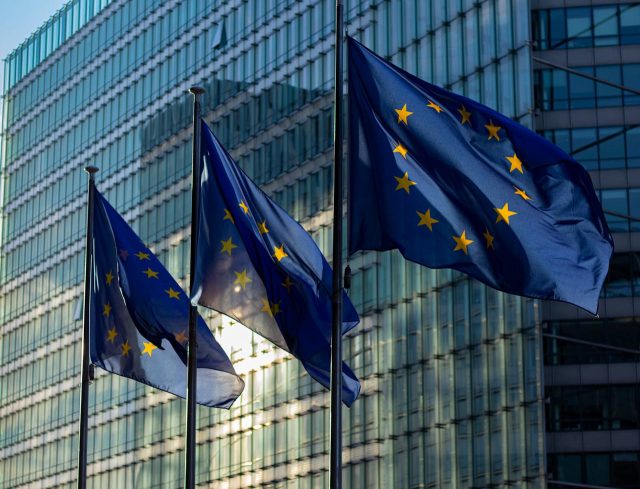
The European Union has taken a bold step in its effort to protect its industrial and energy security from excessive reliance on China. Recent changes to the rules governing auctions for hydrogen projects reveal a growing awareness in Brussels of the systemic risks posed by Chinese dominance in key renewable energy sectors. These new measures, aimed at limiting the presence of Chinese-made parts in EU-funded hydrogen projects, are a significant shift in the Union’s approach to energy independence.
The EU’s Hydrogen Bank, which will run its second renewable hydrogen auction in December, is now incorporating resilience criteria into its project funding process. In the upcoming round, €1.2 billion in grants will be awarded, but with a critical stipulation—projects must not source more than 25% of their production capacity from Chinese parts.
The Chinese Threat: Dominance in Renewable Energy
China’s dominance in solar and electric vehicle production has long been a concern for European policymakers. With more than 50% of global production capacity in some renewable sectors, China has not only undercut European manufacturers with its low-cost production model but has also exposed Europe to significant vulnerabilities. The EU has witnessed firsthand the perils of overreliance on foreign powers for critical industries. In a geopolitical climate fraught with uncertainty, ensuring energy security should be at the forefront of any responsible nation or union’s policy agenda.
Europe’s wind power sector, a key pillar of its renewable energy strategy, has also faced growing competition from Chinese companies. It’s not merely about competing with cheaper prices; it’s about protecting European jobs, industrial know-how, and supply chain resilience. The decision to limit Chinese components in hydrogen projects is a proactive move to halt this concerning trend before it threatens Europe’s burgeoning hydrogen industry.
Earlier this year, when the EU’s Hydrogen Bank allocated nearly €720 million to seven renewable hydrogen projects, European industry raised alarms over the increasing reliance on cheaper Chinese-made parts in the winning bids.
The Draghi Report: A Stark Warning
The EU’s shift to restrict Chinese involvement in hydrogen projects comes on the heels of a report by Mario Draghi, the former head of the European Central Bank. Draghi’s observations were particularly pointed when it came to China. He noted that it would be futile to compete directly in industries like solar panels, where China has already solidified its dominance. Instead, Europe should focus on nurturing new, cutting-edge sectors where it still maintains a competitive advantage.
Hydrogen is precisely such a sector. By building a strong domestic hydrogen industry, the EU can position itself as a global leader in renewable energy, while avoiding the pitfalls of the past. As Draghi rightly noted, Europe cannot afford to rely on foreign suppliers for critical energy components. The future of Europe’s economy and its green energy goals depend on fostering self-reliance in these emerging sectors.
Cutting Through Red Tape: A Long Overdue Reform
Another critical component of the EU’s new hydrogen auction rules is the commitment to cutting red tape. European industry has long complained that the bureaucratic hurdles imposed by the European Green Deal and other complex legislation have hampered growth. Even as the EU tries to meet its ambitious climate goals, it has burdened companies with excessive regulation that stifles innovation and delays projects.
The European Union’s move to limit Chinese involvement in its hydrogen projects marks a crucial turning point. For too long, Europe has been passive, allowing China to dominate key sectors of its renewable energy supply chains. But as Europe seeks to build a robust hydrogen industry, it cannot afford to repeat the mistakes of the past.
By restricting the use of Chinese parts in hydrogen plants and introducing resilience criteria, the EU is sending a clear message: Europe’s energy future will be secure, sovereign, and resilient. This is not just about energy—it’s about safeguarding Europe’s long-term economic and industrial strength. And in a world of shifting power dynamics, these changes couldn’t come soon enough.



 Subscribe
Subscribe